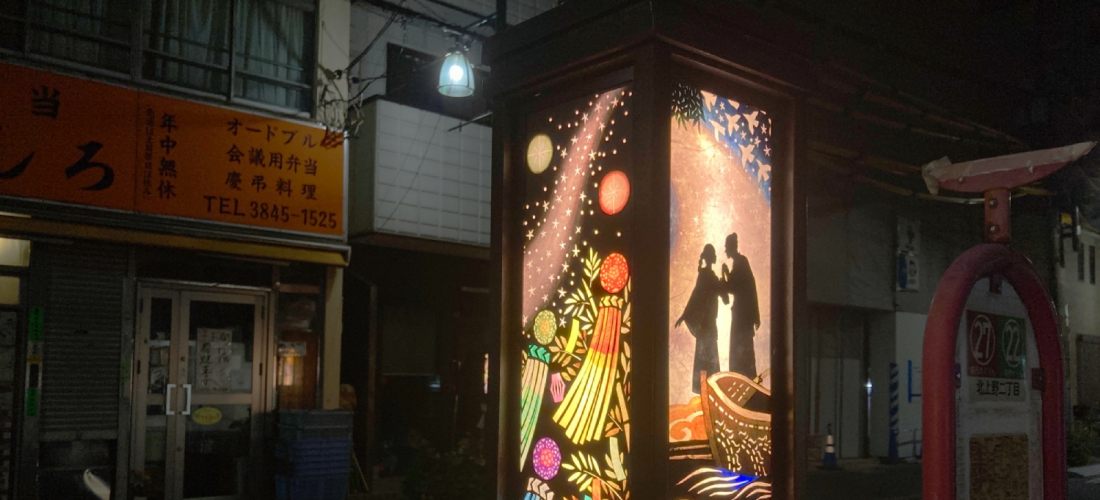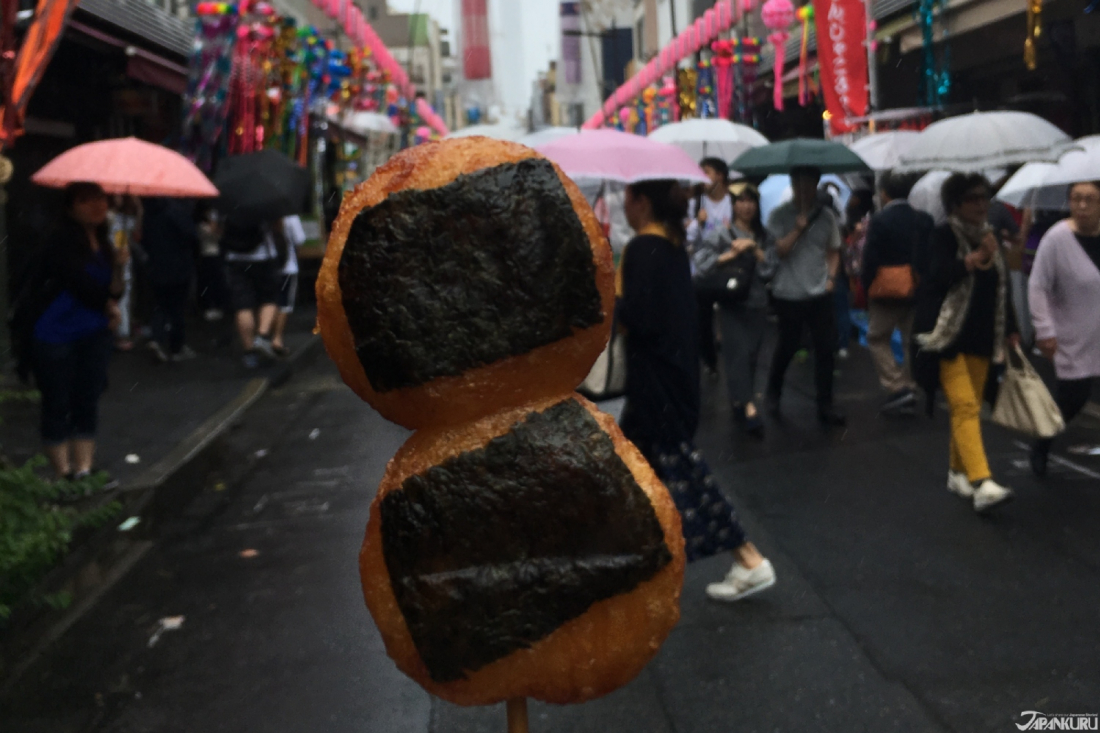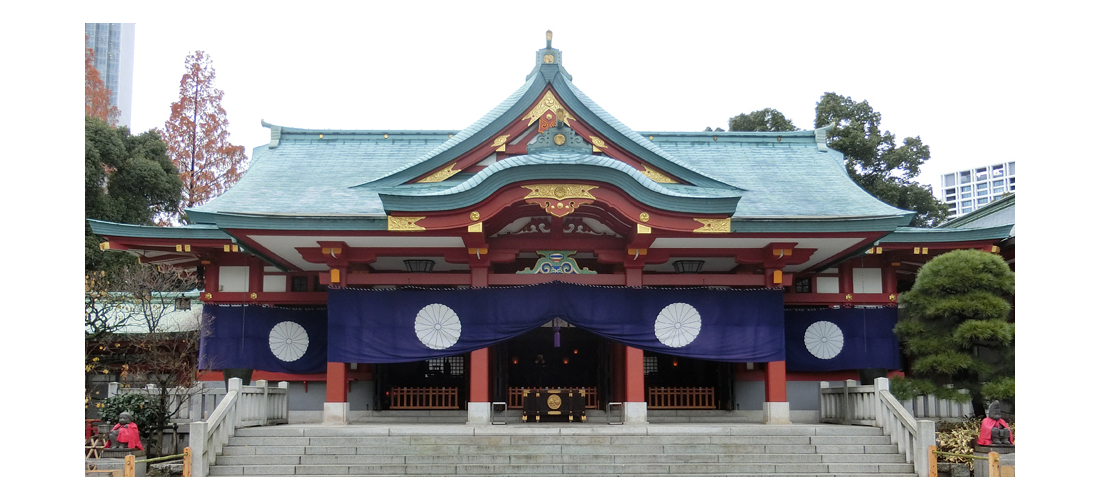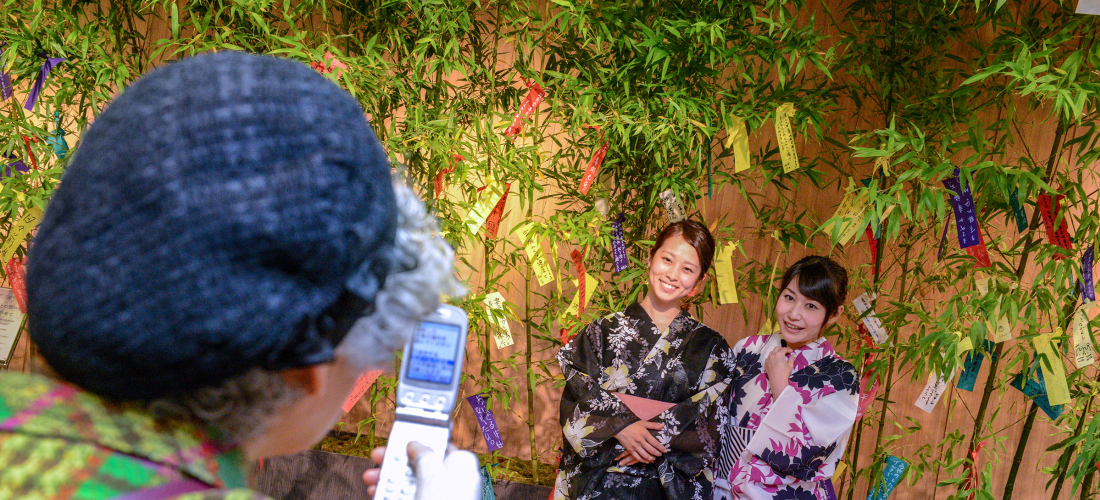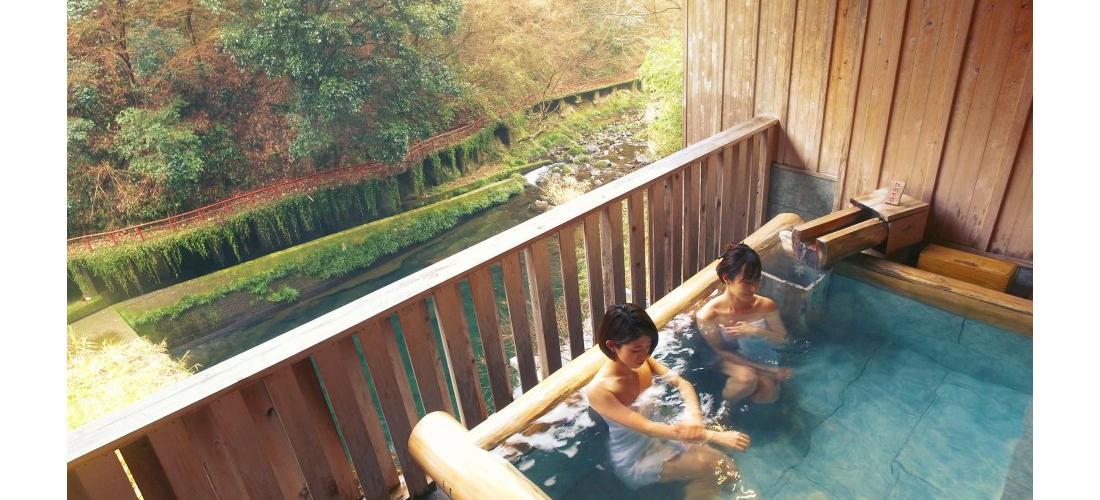CONTENTS
With all the romance of a starry night, Tokyo is filled with ways to enjoy Tanabata!
What Is Tanabata?
All over the world, since time immemorial, people have looked up into the night sky and imagined that the heavenly bodies sparkling above might actually live lives and have stories of their own. In Japan, the holiday of Tanabata comes from just such a magical tale of romance, concerning two stars that really do drift across the sky, Vega and Altair. The legend in question and the associated festival actually originate from China, with evidence as far back as 2,600 years ago, but the tradition was adopted by the Japanese Empress Koken in the mid-8th-century, and celebrations continue to this day. In modern times, Tanabata is a minor holiday celebrated with festivals and local community traditions, and it's sometimes treated a little like a traditional Valentine's Day, harkening back to the story that started it all.
The Tanabata legend tells of Orihime, the weaver star, and Hikoboshi, the cowherd star, and how the love between these two heavenly deities was forbidden (many versions of the story say that Orihime stopped her weaving after marrying Hikoboshi, angering her father and king of the sky, Tentei). Of course, trying to forbid love has never done much to stop it, but the two starry sweethearts were separated and sent off to opposite sides of the "heavenly river," what we might call the Milky Way. Ever since their banishment, the lovers have been destined to meet for just one day each year, the 7th day of the 7th month, when a bridge forms across the milky way and brings them together (in some stories the bridge is made of kindly magpies). Looking up into the sky, the stars of Vega and Altair really do seem to dance around each other out in space, meeting for a short time each summer and then whirling back to opposite sides of the Milky Way. Talk about star-crossed lovers.
How Is Tanabata Celebrated?
When it comes to romance and dreams for the future, even in Japan, it's tradition to wish upon a star! And in this case, the stars are Vega and Altair. One of the most common traditions for Tanabata is to write down your wishes on strips of paper called tanzaku, traditionally used for writing poetry, and then hang the tanzaku up on a leafy stalk of bamboo. Once upon a time, many girls would wish for help improving their weaving and sewing skills, perhaps in hopes of impressing their own Hikoboshi, but these days people write whatever wishes they want, and some will even thank Orihime and Hikoboshi for their help. This part of the holiday can easily be celebrated at home, by picking up some colorful sheets of washi paper for your Tanabata wishes!
Local festivals are another popular way to enjoy Tanabata, and there are famous ones throughout Tokyo, and all over Japan. (The Sendai Tanabata Festival is particularly famous.) These colorful events tend to be highly decorated and beautiful just to walk through, but the best way to enjoy them is usually the same as other Japanese summer festivals: dress up in colorful yukata to match the mood, snack on street food, and enjoy the festive atmosphere! Fortunately yukata are easy to find both in stores and online, and slightly retro yukata have been all the rage in Japan lately. If you're getting your yukata just for Tanabata, though, we can't help but recommend dressing for the occasion in this constellation-patterned yukata, or this starry sky yukata from designer Tsumori Chisato. Kids can even wear little geta sandals with stars, as they enjoy the festival under the starry night sky.
Wait, When Is Tanabata!?
Tanabata festivals often end up kicking off the summer festival season all over Japan, but in some cases Tanabata events are a little too late for that, which begs the question: when exactly is Tanabata? Tradition dictates that the holiday is celebrated on the 7th day of the 7th month each year, the day when Orihime and Hikoboshi meet, to celebrate the stars' reunion. That seems like it should be simple enough, but first, what calendar should we be using? The traditional calendar used by people across China, Japan, and other parts of East Asia relies on cycles of both the moon and sun, and as anyone who celebrates the Chinese/Lunar New Year can tell you, dates do not line up very conveniently with the standard calendar adopted by most of the world these days. According to this ancient calendar, the 7th day of the 7th month often ends up being in early August. But these days many people do prefer to just make things easier and celebrate on the 7th of July, instead. Tanabata only has one official date, but different people prefer to use one calendar or the other, which means that celebrations are split between the two dates each year! Of course, there's no reason not to enjoy the holiday twice every year. Orihime and Hikoboshi certainly won't complain!
Where Are Tokyo’s Best Tanabata Festivals?
In and around Tokyo, there are Tanabata festivals held according to both calendars, which is lucky for any travelers arriving in the city for a summer visit. Twice the dates means twice the chance to celebrate! Events that choose to go by our modern calendar can be found both near Tokyo sightseeing hotspots, and a little outside the city. The Shitamachi Tanabata Festival is celebrated along the length of Kappabashi Street, which stretches between the popular areas of Ueno and Asakusa, making the street easy walking distance from both Ueno Park and Sensoji Temple. The festival is such an ingrained part of local life that the street has Tanabata-themed lamps, which stay up throughout the year as a permanent fixture, their light competing with Tokyo Skytree which sparkles nearby after sunset. When July finally rolls around, the street is closed and vendors set up carts selling drinks and traditional Japanese snacks, and performers parade through the street. It's a fun event in a busy part of the city, but the scale doesn't quite compare to the Shonan Hiratsuka Tanabata Festival, which takes over the area outside of Hiratsuka Station on Tanabata each year, with performers providing entertainment on various stages, and the shopping streets absolutely filled with the colorful streamers that are so common among Tanabata festivals.
Some celebrations that prefer the traditional Chinese calendar, pushing events back to early August, include a couple festivals held in western Tokyo. The Asagaya area is usually fairly quiet and mostly crowded with locals, especially when compared to the somewhat trendy and bohemian Koenji neighborhood next door, but the famous Asagaya Tanabata Festival has been bringing in crowds each summer for almost 70 years. Instead of just sticking to the colorful streamers favored by many festivals, Asagaya's decorations also include huge paper lanterns made in the shapes of anime and movie characters, celebrities, and more! A little farther to the south, the Fussa Tanabata Festival attracts smaller crowds, but their yearly Princess Orihime Contest is unique. Stop by to see this year's Orihime, carefully chosen from a crowd of contestants!
For most people in modern Japan, Tanabata is less of a serious holiday and more of an excuse to celebrate together with colorful festivals, spend a little time with that someone special, and dream of what the future might hold. Wherever you spend your Tanabata, and however you choose to enjoy this summer holiday, we can only hope that Orihime and Hikoboshi take a moment of their starry night reunion to make all our Tanabata wishes come true.
Details
NAME:Tanabata (七夕)
PROFILE
Looking for the latest trends and products coming out of Japan?We've got you covered! <a href="https://www.worldshopping.global/target=_blank">Homepage</a> | <a href="https://www.facebook.com/worldshoppingjp/target=_blank">Facebook</a> | <a href="https://twitter.com/worldshoppingjptarget=_blank">Twitter</a> | <a href="https://www.instagram.com/worldshoppingjp/target=_blank">Instagram</a>
COMMENT
FEATURED MEDIA
VIEW MORE
Narita Airport Tax-Free Shopping List 나리타공항 면세점 쇼핑 리스트 #pr #calbee #jagapokkuru #japanesesnacks #japanesefood #japanesesouvenir #japantravel #japantrip #naritaairport #hokkaido #나리타국제공항 #나리타공항면세점 #나리타공항면세점과자 #일본공항면세점 #일본기념품쇼핑리스트추천 #공항면세점쇼핑리스트 #일본과자추천 #면세점일본과자 #일본기념품추천 #일본과자 #자가폿쿠루 #일본간식 #일본과자쇼핑 #일본면세점필수템 #일본기념품쇼핑

Asakusa's Sanja Matsuri, one of the biggest festivals in all of Tokyo, is almost here! Make sure you check out the festival route so you don't miss all the festivities this May. #asakusa #sanjafestival #sanjamatsuri #asakusashrine #sensoji #sensojitemple #japanesefestival #shintoshrine #japaneseculture #tokyo #tokyotrip #tokyotravel #asakusasightseeing #matsuri #japantrip #japantravel #springinjapan #tokyotravel #japankuru #산자마츠리 #아사쿠사 #일본마츠리 #일본여행 #일본5월

Odaiba's DiverCity Tokyo Plaza is home to the famous real-size 20m-tall Unicorn Gundam, and the popular shopping center has even more Gundam on the inside! Check out the Gundam Base Tokyo on the 7th floor for shelves upon shelves of Gunpla, and the Gundam Base Tokyo Annex on the 2nd floor for cool anime merchandise. Both shops have tons of limited-edition items! #pr #odaiba #tokyo #tokyotrip #japantrip #japantravel #PR #divercity #divercitytokyoplaza #tokyoshopping #gundam #unicorngundam #gundambasetokyo #anime #otaku #gunpla #japankuru #오다이바 #다이바시티도쿄 #오다이바건담 #건담 #일본건담 #건프라 #건담베이스도쿄

Evangelion, in miniature!? Tokyo's SMALL WORLDS Miniature Museum is actually a must-see for anime lovers, thanks to the tiny Evangelion Hangar and Tokyo-III... plus a whole universe of other scenes both real and fictional. #smallworlds #smallworldstokyo #tokyotrip #tokyotravel #evangelion #eva #anime #miniature #miniatures #animefigure #japantrip #japantravel #에반게리온 #스몰월드 #에반겔리온 #スモールワールズ #오다이바 #아리아케

Have you sat down for a snack at Sumida Aquarium yet? This aquarium next to Tokyo Skytree is known for its penguins and garden eels, but we can't get enough of their cute snacks! There are lots of good seats around the aquarium, too, so it almost feels like one big cafe. 🐧 • Find out more at Japankuru.com! (Link in bio.) • #japankuru #sumidaaquarium #skytree #tokyoskytree #solamachi #sumida #tokyo #tokyotrip #tokyotravel #aquarium #japanesesweets #themecafe #すみだ水族館 #Japan #日本 #일본 #Japon #ญี่ปุ่น #Japão #япония #japantravel #日本旅行 #日本旅遊 #japan_of_insta #japantrip #traveljapan #japan🇯🇵 #igerstokyo #explorejapan

For anime fans, the Evangelion areas at Small Worlds Miniature Museum are a must see! The tiny miniature people in the Evangelion Hangar look like ants beneath the moving Unit-01, Unit-00, and Unit-02! And over in Tokyo-III, characters like Shinji, Rei, and Katsuragi live life on a miniature scale. #odaiba #tokyo #tokyotrip #japantrip #japantravel #ariake #smallworlds #miniaturemuseum #smallworldstokyo #tokyotravel #evangelion #eva #anime #miniature #miniatures #animefigure #japankuru #스몰월드 #에반게리온 #오다이바 #오다이바관광 #오다이바스몰월드 #미니어쳐

